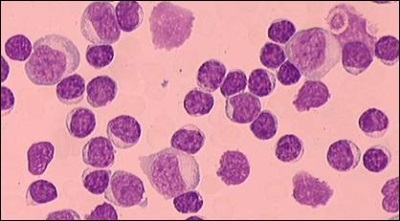The child has elevated lymphocytes in the blood.
Any changes in a child’s blood test cause the parents anxiety, especially if the number of leukocytes changes, because it is known that such cells are representatives of the immune system. If a mother sees an excess of lymphocytes in the analysis form or hears the word “lymphocytosis” from a doctor, she wants to know what it is, from which such blood cells are elevated and whether high levels of lymphocytes are dangerous for a child.
When lymphocyte levels are elevated
The level of lymphocytes is determined using a clinical blood test, displaying in leukogram (leukocyte formula) as a percentage of all leukocytes. Although lymphocytes are a group of cells (secrete B-lymphocytes, several types of T-lymphocytes and other subpopulations), a complete blood count does not define different types of such white blood cells separately.
Newly-born babies do not have a lot of lymphocytes, because their immune systems are not yet fully functional. But after a few days after birth, the number of lymphocytes begins to increase and, up to 4 years of age, exceeds the number of other types of white blood cells.
At about 4-5 years old, the level of lymphocytes and neutrophils becomes the same, after which the number of neutrophils begins to prevail.
The upper limit of normal lymphocytes in children is considered:
|
Newborn baby |
32% |
|
From the 5th day of life |
50% |
|
From 10 days to a year |
60% |
|
In children 1-5 years |
65% |
|
In children over 5 years |
55% |
|
In children over 10 years old |
45% |
If the result of the analysis showed an increased number of lymphocytes in excess of the indicated numbers, it is called lymphocytosis. It is relative if the number of lymphocytes does not exceed the norm, but only seems overestimated due to a decrease in the level of other leukocytes. At the same time, the total number of leukocytes may remain normal or be elevated.
Also found absolute lymphocytosiscaused by an excessive amount of lymphocytes in the peripheral bloodstream due to their active formation in the bone marrow and other places or insufficient destruction in the spleen.
Causes of Lymphocytosis
Most often, lymphocytosis is a sign of the disease, because an increased number of such white blood cells is needed to fight an infectious agent or other negative impact on the children's body.
Diseases that cause lymphocytes to be inflated in children’s blood include:
- SARS.
- Viral hepatitis.
- Measles.
- Infection caused by adenovirus.
- Chicken pox.
- Rubella.
- Flu.
- Herpes infection.
- Toxoplasmosis.
- HIV infection.
- Infectious mononucleosis.
- Enterovirus infection.
- Whooping cough.
- Cytomegalovirus infection.
- Brucellosis.
- Infection with parasites or protozoa.
- Tuberculosis.
- Leukemia, which can be both acute and chronic lymphocytic leukemia.
- Malignant thymoma.
- Non-Hodgkin's lymphoma.
- Smith disease is a rare infectious disease with lymphocytosis.
- Franklin disease.This is another rare pathology, in which lymphoid tissue grows and the production of immunoglobulins increases.
However, a high percentage of lymphocytes is not always associated with a viral infection or tumor process. If the lymphocytosis is relative, the reason for such a blood test result is factors that reduce the number of other types of white blood cells, for example, neutropenia due to vitamin B12 deficiency or the use of certain drugs that suppress neutrophils.
Also non-infectious causes of lymphocytosis include:
- Arsenic or lead poisoning, as well as carbon disulfide or tetrachloroethane.
- Autoimmune diseases.
- Hyperthyroidism.
- Bronchial asthma.
- Avitaminosis.
- Removing the spleen, causing blood cells to not be disposed of in the right amount.
- The action of some drugs - drugs against epilepsy, hormonal drugs, antibiotics, narcotic analgesics and others.
Separately, it should be noted that after recovery, the level of lymphocytes does not immediately return to normal levels. In most children, for several weeks, and sometimes months, after the illness has ended, the lymphocytes will be determined in an increased amount, but their level will gradually decrease.
Opinion Komarovsky
Symptoms
An increase in lymph nodes is found in some children with lymphocytosis. The spleen or liver can also increase, because with an increase in the number of blood cells, the load on these organs increases.
What to do
If a child has increased not only lymphocytes, but also monocytes, this will lead the doctor to the idea of a chronic viral infection. Also, with a prolonged infectious process, children are sent for analysis, which determines activated B-cells. If the activated lymphocytes in a child’s blood test exceed the normal value, this may be a sign of an autoimmune process.
How to determine the type of infection using indicators of the level of lymphocytes, see the video program E. Komarovsky:
Treatment
After learning why the child has lymphocytosis, the doctor will prescribe a suitable therapy. In many cases, such a change in the cellular composition of the blood simply indicates active resistance of the child’s immune system to an infectious disease.. And therefore, no drugs that reduce the number of lymphocytes are required.
The child is provided with the correct sleep pattern, adequate rest, walks in the fresh air, good nutrition. It contributes to the rapid recovery and normalization of well-being, supports the baby’s immunity and helps to normalize the number of lymphocytes in its blood.
According to the indications, among the medicaments used antiviral, anti-inflammatory, antipyretic and other drugs, and if a complication in the form of a bacterial infection joins, it is necessary to give the child and antibiotics.

Prevention
To prevent an increase in lymphocytes in the blood of a child, parents should focus on strengthening the immune system of a daughter or son:
- Provide your child with a balanced diet.
- Encourage moderate exercise and sports.
- To dress the child for the weather, not allowing hypothermia.
- Do not allow the child to have bad habits.
- Annually check the blood for timely detection of diseases.
















